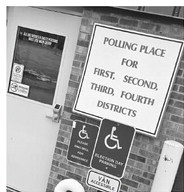Passing grades
All local schools meet or exceed expectations in state report cards
All area public schools either meet or exceed expectations in the state’s report cards released on Tuesday.
The local results are in line with the statewide scores. According to the Department of Public Instruction (DPI) on state report cards issued for the 201819 school year, overall 87% of rated schools met or exceeded expectations as did 96% of the state’s 421 public school districts.
This is the fourth year the report cards used legislatively required calculations, and the fourth year private schools in the Milwaukee, Racine, and statewide parental choice programs received report cards. For 2018-19, 2,112 public schools and 322 private choice schools received report cards. Of choice schools, 106 exercised the option to receive an all student report card in addition to the required report card for choice students only.
Report card ratings range from five stars, denoting schools and districts that significantly exceed expectations, to one star for those that fail to meet expectations.
Overall Score
70.1
Meets Expectations
Medford Area School District’s combined score. Scores are calculated in four priority areas: student achievement; school growth; closing gaps between student groups; and measures of students being on-track for postsecondary readiness, which includes graduation and attendance rates, third-grade English language arts achievement, and eighth-grade mathematics achievement. Report cards provide a snapshot of performance across the four priority areas. While politically more intended to allow parents to quickly compare districts, the scores are used by school districts to identify areas that need additional focus.
Medford Schools
As a whole the Medford Area Public School district scored 70.1 placing it at the high end of the meets expectations range. Student achievement in both English language arts (ELA) and math exceeded the state score. District growth was just under the state score, and ontrack and postsecondary readiness was slightly above the state. In close gaps the district trailed the state 61.6 to 68.8 points with the district below the state in closing math gaps and graduation rate gaps. Demographically, Medford is 91.3% white , 6.3% hispanic/Latino and 1% two or more races with 14.7% of students having disabilities and 41.7% being economically disadvantaged.
“We are excited that our state report cards once again showed positive results,” said Laura Lundy, director of curriculum at Medford schools.
“Each year we analyze the scores to identify areas that we can improve upon. Our work seems to be paying off. This year we have seen increases in the areas that we have focused on. For example, over the past few years, we have focused on improving our students’ reading skills at the high school. This year we were happy to see that our ACT reading scores increased by almost two percentage points and for the first time since the ACT has been given to all juniors, our ACT reading score was above the state average. In order to improve our reading scores, the English Department identified the goal areas that students were low in, and then they worked to increase and change the instruction in those areas. In addition to changing instruction, we also identifi ed that students taking the ACT had a difficult time finishing the reading test in the allotted time. Therefore, teachers have added some timed testing in their regular assessments to help students learn how to read and answer questions more quickly,” she said.
Lundy also noted that the state test is only one of the measures the district uses to help children learn. “Although we take our state test scores seriously, we know that many times the scores don’t tell the whole picture of our successes or needs,” Lundy said.
Medford Area Senior High (MASH) was at the high end of the meets expectations with a score of 71.4. Student achievement was a boost with a school score of 63 compared to the state’s 59.8. School growth was mixed with MASH trailing the state in ELA growth and exceeding the state in math growth. The school also gained in closing gaps in both ELA and math. It also exceeded the state for graduation rate.
Medford Area Middle School (MAMS) was at the high end of meets expectations with a score of 70.5. Student achievement exceeded the state in both ELA and math with a combined score of 67.1 compared to the state score of 61.3. MAMS trailed the state in school growth being just 1.9 points behind the state in ELA and 2.8 points behind the state in math growth. In closing gaps, MAMS was ahead of the state in closing ELA gaps but trailed the state in closing math gaps. MAMS was ahead of the state on being on-track with a score of 87.4 compared to the state score of 85.5.
Medford Area Elementary School (MAES) had the district’s best score of 80.2 putting it at exceeds expectations. Student achievement was strong with 70.5 compared to the state average of 65.7. School growth, especially in math was also strong with 81.2 compared to the state score of 66. MAES was also above the state being on-track. MAES did not receive a score for the closing gaps category under a change in how the scores are weighted to not count a change of 20 points or more since it is considered a statistical outlier and something outside the school’s control.
Stetsonville Elementary School (SES) exceeded expectations with a score of 80.1. SES was bolstered by its ELA and math achievement scores with students score 82 out of 100 points in that area compared to the state 65.7. Math was a strong area with students being 10 points above the state. In closing gaps, SES also exceeded the state by more than 10 points and was ahead of the state in being on-track and in school growth.
The Rural Virtual Academy (RVA) was solidly in the meets expectations range with a score of 66.6. The RVA matched the state on achievement in ELA with 31.9 out of 50 compared to the state with 31.6 out of 50 points. The RVA was slightly lower than state average with 24.5 out of 50 points compared to 30.7 out of 50 points for math. In school growth, the RVA trailed the state average 54.6 points to 66 points. It also was slightly behind the state average on being on track and post secondary readiness largely as a result of the graduation being below the state average. On the positive side, the RVA exceeded the state average in closing gaps with 74.6 out of 100 compared to the state average of 68.8.
Rib Lake Schools
Overall Score
74.7
Exceeds Expectations As a district, Rib Lake received an aggregate score of 74.7 which places it in the exceeds expectations range. The district scored above the state averages in both English language arts (ELA) and math achievement, closing gaps, and being on track scoring near perfect for its graduation rate and attendance. The district lost points on district growth with a score of 64.2 compared to the state average of 66. Demographically, Rib Lake schools are 91.4% white, 5.6% hispanic/Latino and 1.3% African American. The district has 15.4% of students with disabilities and 42.5% of students are economically disadvantaged.
Rib Lake Elementary School (RLES) led area schools with an exceeds expectations score of 82.8, just .2 points below the five-star exceeds expectations level. RLES greatly surpassed the state averages in both ELA and especially in math where they had 47.3 out of 50 points. School growth saw RLES at 77.4 points compared to the state score of 66. In closing gaps, RLES also exceeded the state with 78.2 compared to 73.9. RLES also had strong scores in being on-track for readiness with high attendance rates and higher than state averages for third grade ELA achievement.
Rib Lake Middle School (RLMS) scored a 66 placing it in the center of the meets expectations range. Achievement scores exceeded the state averages while school growth slightly trailed state averages. RLMS also exceeded the state in being on-track. The school lost points toward its aggregate score in the closing gaps area with 50.4 points compared to the state average of 73.9.
Rib Lake High School (RLHS) had an aggregate score of 69.2 placing it on the high end of the meets expectations. As with other Rib Lake schools, the math and ELA achievement scores were above the state scores, especially in the math achievement. RLHS also exceeded the state in closing gaps and being on-track. RLHS lost points on school growth getting 52.7 compared to the state average of 66.
Gilman Schools
Overall Score
70.9
Meets Expectations
The Gilman School District as a whole received a score of 70.9 placing it in the high end of the meets expectations range. While as a district, average scores in ELA and mathematics lagged slightly behind the state, the scores for closing achievement gaps for those areas were more than double the state average. Demographically, Gilman schools are 97.5% white and 2.1% two or more races. A total of 13.5% of students have disabilities and 55.2% are economically disadvantaged.
Gilman High School received a report card score of 68.3 which places it in the middle of the meets expectations range. The school lost achievement points compared to the state average in ELA and was slightly behind the state average in math. In school growth, Gilman High School was just below the state average. It also trailed the state in closing gaps with a score of 62.7 compared to 68.4, however the Gilman aggregate score does not include graduation rate gaps and ranks ELA and math higher.
Gilman Elementary School received a state grade of 65.4 which was also in the mid-range of the meets expectations range. School growth was the major area bringing the aggregate score down. In ELA, the school growth for Gilman Elementary was 18.8 out of 50 points compared to 33 out of 50 points and for math it was 29.2 out of 50 points compared to 33 out of 50 points for the state. The school was slightly behind the state in closing math achievement gaps, but was slightly ahead of the state average for being on-track.







